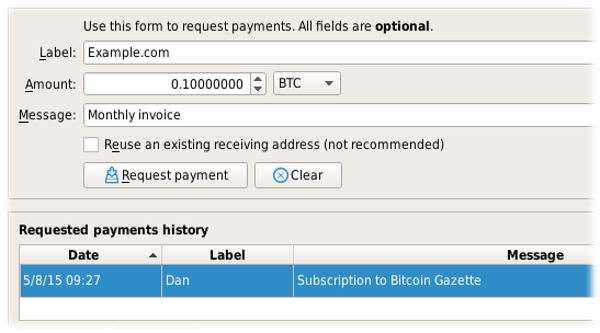Bitcoin Core’s User Interface
Imagine a scientist reading about an experimental result and then repeating the experiment for herself. Doing so allows her to trust the result without having to trust the original scientists.
Bitcoin Core checks each block of transactions it receives to ensure that everything in that block is fully valid—allowing it to trust the block without trusting the miner who created it.
This prevents miners from tricking Bitcoin Core users into accepting blocks that violate the 21 million bitcoin limit or which break other important rules.
Users of other wallets don’t get this level of security, so miners can trick them into accepting fabricated transactions or hijacked block chains.
Why take that risk if you don’t have to? Bitcoin Core provides the best possible security against dishonest miners along with additional security against other easier attacks (see below for details).
How Validation Protects Your Bitcoins
Bitcoin banks and lightweight (SPV) wallets put your bitcoins at increased risk of being stolen. That risk may be acceptable for small values of bitcoin on mobile wallets, but is it what you want for your real wallet?
Note that although all programs—including Bitcoin Core—are vulnerable to chain rewrites, Bitcoin provides a defense mechanism: the more confirmations your transactions have, the safer you are. There is no known decentralized defense better than that.
Help Protect Decentralization
The bitcoin currency only works when people accept bitcoins in exchange for other valuable things. That means it’s the people accepting bitcoins who give it value and who get to decide how Bitcoin should work.
When you accept bitcoins, you have the power to enforce Bitcoin’s rules, such as preventing confiscation of any person’s bitcoins without access to that person’s private keys.
Unfortunately, many users outsource their enforcement power. This leaves Bitcoin’s decentralization in a weakened state where a handful of miners can collude with a handful of banks and free services to change Bitcoin’s rules for all those non-verifying users who outsourced their power.
| Users of Bitcoin banks Trust bankers |
Users of P2P lightweight wallets Trust miners |
| Users of client lightweight wallets Trust “free” services |
Users of Bitcoin Core Enforce the rules |
Unlike other wallets, Bitcoin Core does enforce the rules—so if the miners and banks change the rules for their non-verifying users, those users will be unable to pay full validation Bitcoin Core users like you.
As long as there are many non-verifying users who want to be able to pay Bitcoin Core users, miners and others know they can’t effectively change Bitcoin’s rules.
But what if not enough non-verifying users care about paying Bitcoin Core users? Then it becomes easy for miners and banks to take control of Bitcoin, likely bringing to an end this 16 year experiment in decentralized currency.
If you think Bitcoin should remain decentralized, the best thing you can do is validate every payment you receive using your own personal full node such as Bitcoin Core.
We don’t know how many full validation users and business are needed, but it’s possible that for each person or business who validates their own transactions, Bitcoin can remain decentralized even if there are ten or a hundred other non-verifying users. If this is the case, your small contribution can have a large impact towards keeping Bitcoin decentralized.
Do You Validate Your Transactions?
Some people confuse supporting the network with helping to protect Bitcoin’s decentralization.
To improve your security and help protect decentralization, you must use a wallet that fully validates received transactions. There are three ways to do that with Bitcoin Core right now:

Use the built-in wallet’s graphical mode. If you request payment using the following screen in Bitcoin Core, your received transactions will be fully validated.
Use Bitcoin Core as a trusted peer for certain lightweight wallets. Learn more on the user interface page. If you use a secure connection to your personal trusted peer every time you use the wallet, your received transactions will be fully validated.
Use the built-in wallet’s CLI/API interface. This is meant for power users, businesses, and programmers. The user interface page provides an overview, the installation instructions can help you get started, and the RPCdocumentation can help you find specific commands. If you’re using
getnewaddressto create receiving addresses, your received transactions will be fully validated.
If you have any questions, please ask on the forums or chatrooms.
